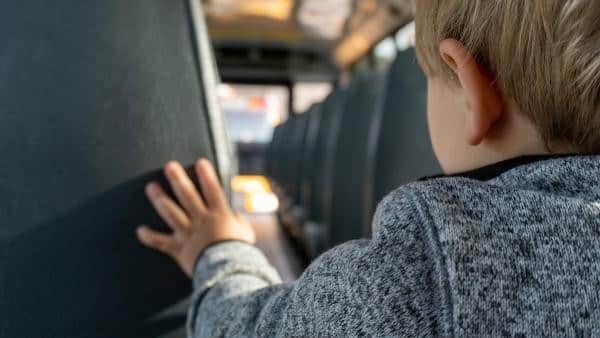On Monday 12 September, 2022, a total of 8,247,313 students will return to the classrooms across the country, and whilst this is no doubt an exciting time for the vast majority of them, it also means one very important thing, that each and every one of those 8 million plus people will have to travel to and from their educational establishments, and as such, the profile of road traffic changes considerably.

Primarily, that means more traffic travelling to the schools and colleges in the morning, returning again in the afternoon, resulting in an increase in vehicles, cars, and buses, as well as more vulnerable road users such as bicycles, mopeds, and this year no doubt an increase in personal mobility vehicles (like electric scooters), not forgetting of course those who walk to school, and so an increase in pedestrians too.
If you are about to embark on the school run, you must remember that children under 1.35 metres in height are not allowed in the front seats of cars, and must sit in the back. The only exceptions are if there are no rear seats, such as a sports car, or if the seats are already occupied by other children.
All occupants must be secured in the vehicle, by means of a seat belt, or specially designed retention system suitable for them, that includes children. Those of a younger age must have a suitable seat which must be secured.
Another important point to remember is that all vehicle occupants must wear a seat belt. Some cars only have two seat belts at the back. In this case, only two passengers can be carried. A seat belt is required for all occupants.
All objects must also be secure in the vehicle. That not only means their school bags, lunchboxes and football kit, but also that school project they have to take in, nearer the end of term.
When you arrive at the school drop off point, remember that the laws still apply and you´re not allowed to double-park, block entrances, or park in an illegal place with your hazard lights on just because you are dropping off your children for school. Doing this creates an additional hazard and puts the children at risk.
You must choose a safe, convenient and legal place to drop off your children. Where possible, ensure that they exit the vehicle on the pavement side, still warning them to be aware of their surroundings before opening the door.
Remember, when you are about to pull away, pay extra attention to your surroundings too, including rigorous checks of your blind spots, as there could be children or other road users appearing from anywhere.
On the other hand, if you are not taking children to school but are driving at the busy times, look out for school buses. Buses operating on the school run will display a pictogram which shows the type of service they are operating. This is not only useful for parents and guardians for spotting school buses, but acts as an indication to all road users that the service is a school bus, carrying children, and is therefore subject to a restricted speed, the maximum permitted speed must be reduced by 10 kilometres per hour, and, when it stops, children may wander into the road, so they must be given more space and attention.
If you approach a school bus which has stopped, slow down and take it easy, being extra observant and giving the bus more room than you might with other vehicles. There is a chance that some children may be late and run into the road to catch the bus, or those leaving the bus might wander around, oblivious to their surroundings, and so vigilance is crucial.
If a bus is indicating to pull out, let it. There may be a temptation to try to pass the bus, but courtesy is key, so please give way, if it´s safe to do so.




